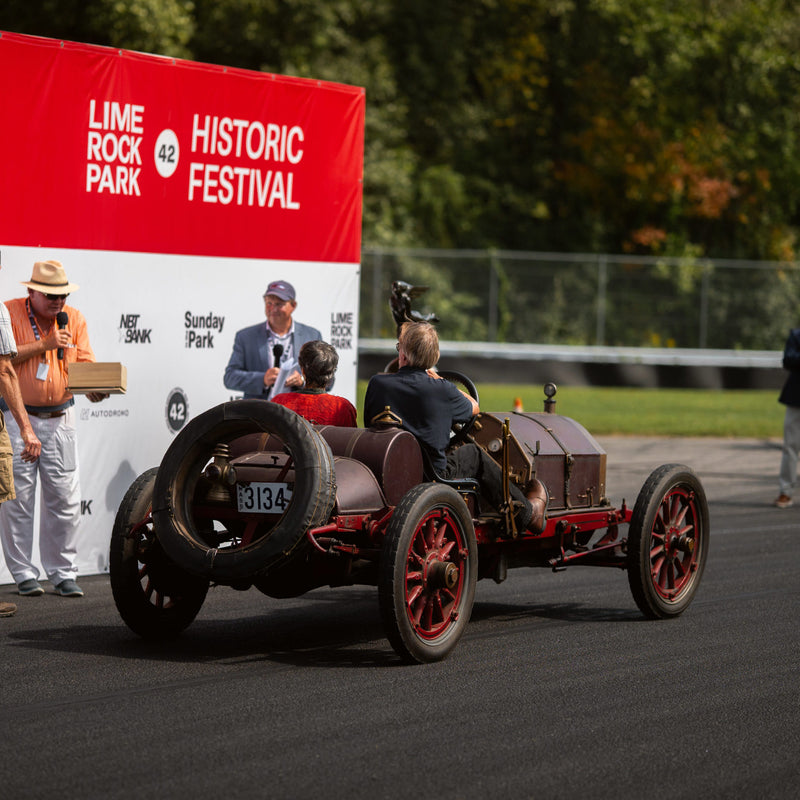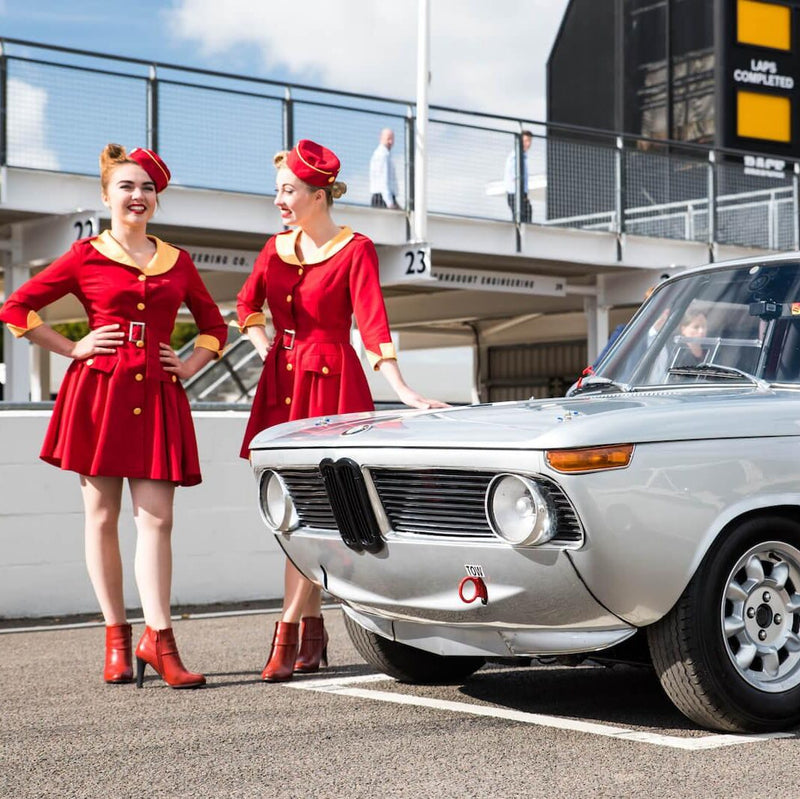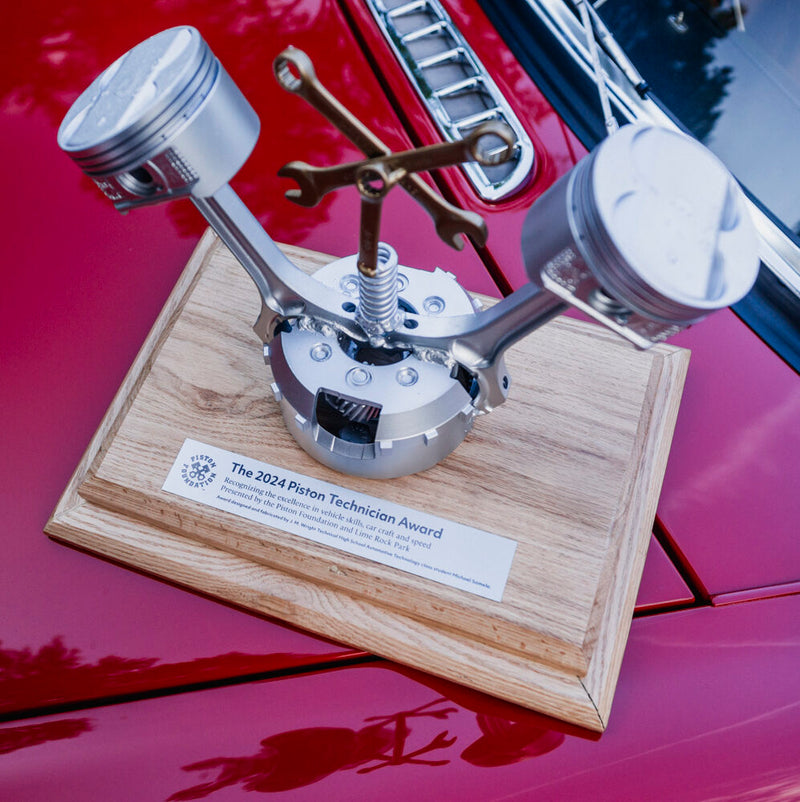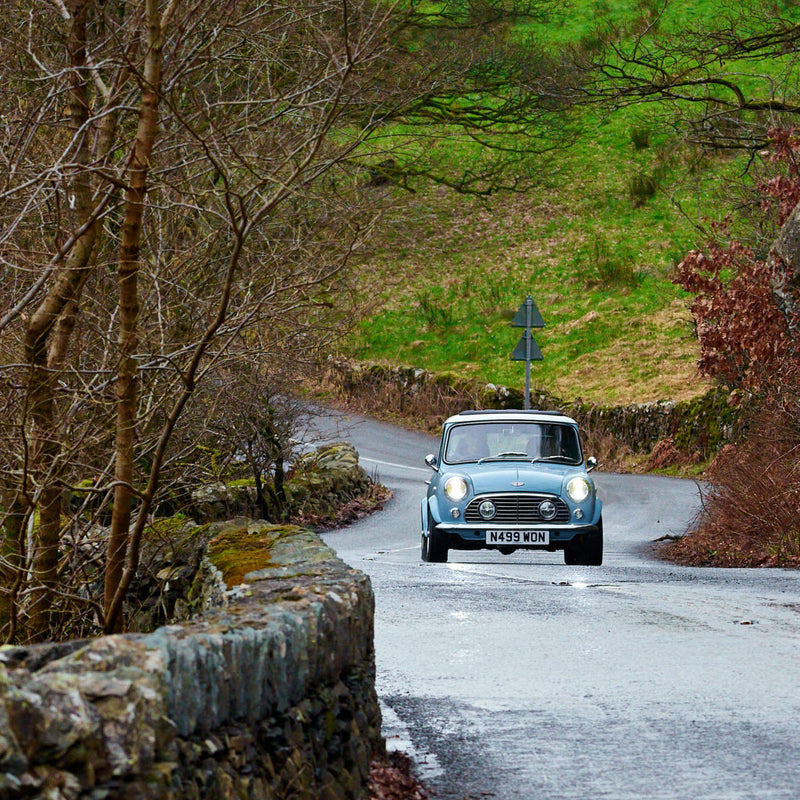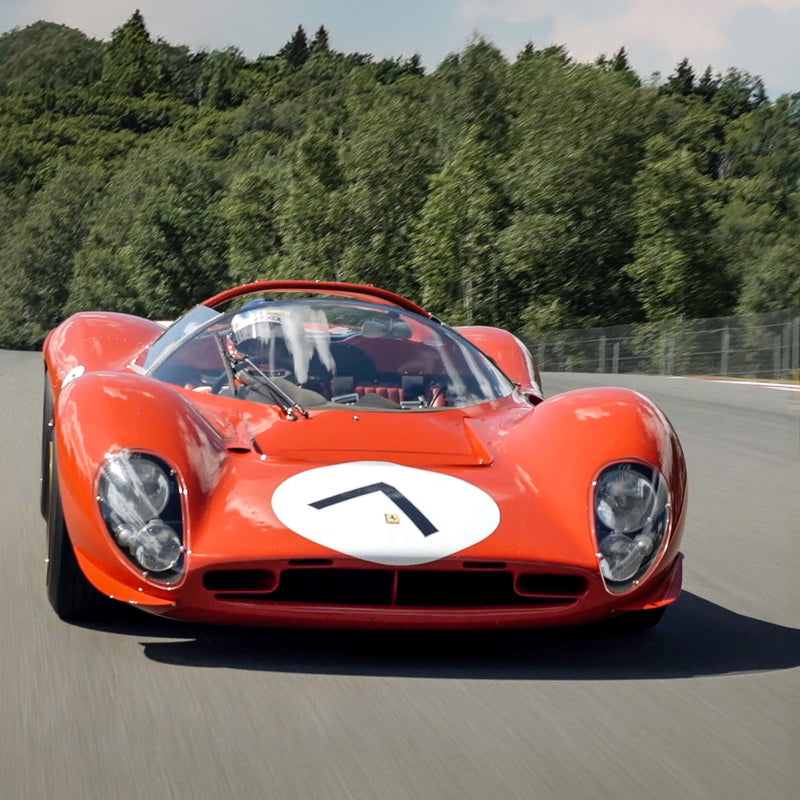



The relationship between the Italian coachbuilder and the British marque stretches way back to 1960 with the lightweight Zagato-bodied DB4 GTs built for competition, but this latest pairing is more directly traced to 2011, when the longtime collaborators revealed the first Aston Martin V12 Zagato. The Zagato design was immediately acclaimed at Villa d'Este, and Aston Martin raced a pair on the Nürburgring for 24 hours where they both finished and performed admirably, but the planned production run of 150 resulted in just 61 examples produced. That project was to celebrate the then-50-year anniversary of the partnership between the two companies, and earlier today it was announced that these updated versions, the "Twins," will be built to celebrateZagato's 100-year anniversary , and will feature the centenary-specific golden "Z" signatures in place of the black and silver badges.



Specialty manufacturer R-Reforged will hand build the cars under license in its new facility in Warwick, where just 19 examples of each Twin will be made (as is standard these days, the majority have been accounted for before by the time of the press release). The V12 Zagatos are offered exclusively as a pair, but you aren't just buying two copies of a car that was first shown in 2011.
Now based on later-model V12 Vantage running gear, the tuned 5.9L V12 power plants in the Twins will be good for nearly 600bhp compared to the 510 of the 2011 version, and they feature a more extensive application of carbon fiber for the bodywork, which also incorporates active aero elements on the rear deck where there were none on the 2011 cars. The Speedster configuration is a new addition (the 2011 car was coupe-only), whereas the coupe version retains the iconic Zagato double-bubble roof. Both cars will roll on new 19" center-locking wheels from APP Tech. The Twins are priced at roughly $2.2 million as a pair, with deliveries scheduled (what a funny word that is these days) for the first quarter of next year.
So, that's the gist of what's new, but we spent some time with husband and wife Andrea and Marella Rivolta Zagato to glean some additional insight into the project, and the company's history with Aston Martin.


Petrolicious: How does Zagato approach the task of building a beautiful new wrapper for vehicles from a brand like Aston Martin that already has a strong visual identity and consistency in its design timeline?
Zagato: We are “case designers" and we have always been concentrated on the body shape and not on mechanics like the tuners. Our main task is to fully respect the OEM package (and therefore all constraints that allow an entirely certifiable, road-legal automobile), but we still add the glamour and the allure of our Signature. We were also very lucky since, being 100 years old, we started our collaborations with 45 different manufacturing brands at their very early stages. That means we were often present at the very beginning of their histories, and worked directly with the company founders. This fact gave us the chance to establish a unique and distinctive language that often created milestones in their history.
With Aston Martin, the main two design languages were the Touring/Tickford one for the standard production models, and the Zagato language for the special editions. Therefore, while the Aston Martin Design Centre is inspired by the former, they leave to us the exploration and development of the Zagato Editions. This situation allows us to preserve one of the original DNA of Aston Martin and still create a Signature Zagato design—in many ways it is similar to how we did it 60 years ago.
Petrolicious: Where did the idea come from to produce the Twins in the UK with R-Reforged?
Zagato: After more than 10 years of fine-tuning of the CAD-CAM-CAE process (the first application of which was on the Alfa Romeo S.Z. in 1989), were were able to offer the OEMs a new process by which the body is entirely engineered in Italy while the moulds and the assembly may be done abroad. The successful production experiment of the Toyota VM-180 Zagato Edition in Japan (2000) suggested that this new business model could be applied to the Aston Martin DB7 GTZ (2002). From then on, we’ve only been producing one car per month (following the nine multiples of art rule) in order not to lose our competence in manufacturing, but our Special Editions are done outside, mainly in the UK. This is also the case with R-Reforged for the Twins.
Petrolicious: If somebody learned about Zagato before the 1970s they would probably associate Zagato with coachwork on the products of Italian brands, but if you learned about Zagato after 1970, the most definitive relationship is with Aston Martin. Is this a fair statement? And if so, why do you think it panned out this way?
Zagato: From 1919, Zagato started to collaborate with all the most prestigious Italian brands like Ansaldo, Itala, Diatto, Isotta Fraschini, Spa, OM, and of course with Fiat, Alfa Romeo, Lancia, Maserati, Abarth, and Ferrari. Some of them have disappeared, while some of the others remaining today are facing difficulties. In the mid 1940s, our company started to widen its horizon working notably with British luxury sports brands like AC, Jaguar, MG, Fraser Nash, Hillman, BMC, Bristol, Rover, and obviously Aston Martin.
In the case of Aston Martin, the introduction at the 1983 Geneva Motor Show of the Alfa Romeo Zeta 6 created the base for a new successful collaboration with them. Victor Gauntlett (former Chairman and Chief Executive at Aston Martin) was so impressed by the prototype that he ordered one, and two years later he made the V8 Vantage Zagato possible. We had worked with Aston Martin in the past, but this marked the third generation of the Zagato family having a relationship with the brand, and the creative association between Zagato and Aston Martin has been consistent ever since. From that moment, Aston Martin has never abandoned us, nor us them.
Petrolicious: Getting back to the specific examples of your collaboration, besides the incorporation of active aero and the new exterior and interior colors, how has the design of the Twins changed since the 2011 version?
Zagato: First of all, we wanted to recall the design of the prototype—which won the Villa d’Este concept car award and raced at the Nürburgring a week later—where we foresaw an active aero system but did not have time to properly test it. Second, we wanted to incorporate the heritage message in order to celebrate our Centenary. No major changes were made, but many tweaks. The Speedster version was conceived immediately after the Coupé production finished.
Petrolicious: Since Zagato heritage is so rooted in hand-formed aluminum and alloys, how does your company philosophy adapt to materials like carbon fiber and kevlar that are used to realize your designs today?
Zagato: We believe that carbon fiber is much more functional than hand-beaten aluminum for both one-offs and few-offs. The final surface is much more accurate and therefore respectful of our CAD designs, and the existence of molds allows the quick manufacturing and replacement of parts. Modern donor cars are geometrically much more precise than cars from just ten or twenty years ago. This precision and the large use of carbon fiber and kevlar on the new generations has reduced their cost and increased their function. Given these circumstances, my grandfather would have made the same choice.
Petrolicious would like to thank ElanPR and Andrea and Marella Rivolta Zagato for making this conversation possible















































